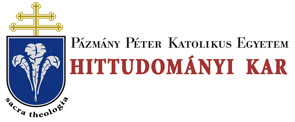Folia Theologica et Canonica 6. 28/20 (2017)
IUS CANONICUM - Szabolcs Anzelm Szuromi, O.Praem., Historical development of the aggravating and extenuating circumstances in the canonical penal law
242 SZABOLCS ANZELM SZUROMI, O.PRAEM. I. The original legal - canonical - character OF THE EXTENUATING CIRCUMSTANCES In order to define the culpability regarding a concrete penalized act, the Church - but even the civil authority within a legal penal process - from the beginning of the developed jurisprudence - deliberated the juridical-, subjective-, and objective- aspects of the concrete crime (crimen); within the Church even the aspects of peccancy (peccatimi).4 The meaning and interpretation of sin and crime touch such two fundamental questions which got always central position in the theoretical understanding the daily life of any form of human society and theory on the close relation between morality and law. Peter Card. Erdő was the one who has recently summarized in detailed form in 2014 a historical and current canonical analysis of the categories of sin and crime, expressing the inseparability of these two principles in the life of the human society in any historical epoch, pointing out the strong bond of these categories to the peculiarities of morality and law (Il peccato e il delitto. La relazione tra due concetti fonda- mentali alla luce del diritto canonico)5. This mentioned overview makes quite clear, that if we like to understand the concept of the old law on different characters of the extenuating or aggravating circumstances, we must focus on subject of the crime6 7, because the delict (delictum - crimen) and the sin (peccatum) are inseparable in the canonical penal system, and this always assuming the moral capacity of the person. Here arise categories of intention (dolus), inadvertence (culpa — negligentia), and the ignorance (ignoranfia).1 Regarding the “intention”, the Corpus iuris canonici8 used several technical terms9, depending on the act: animus seu voluntas, propositum, industria, delibe- ratio, consultum, malitia, fraus, and nequitia. This long list had been supplied by Pope Pius IX in 1869 with the expression of scientia, audacia, and prae- sumptio in his apostolic constitution.10 Considering the perpetrator of canonical penalized act, the old ecclesiastical sources - back to the 4lh century - had built their argumentation on three important pillars: 1 ) whether the perpetrator has capacity to realize any crime or not; 4 Bánk, J., Kánoni Jog, IL Budapest 1963. 669. 5 Erdő, P., Il peccato e il delitto. La relazione tra due concetti fondamentali alla luce del diritto canonico (Pontificia Università della Santa Croce; Monografie Giuridiche 44), Milano 2014. 6 Bánk, J., Kánoni Jog, IL 673-674. 7 Szuromi, Sz. A., A „peccatum ” és a „ vitium ” eltérő megítélése a kánonjogi források tükrében, in Kánonjog 17 (2015) 59-70. 8 Erdő. P„ Storia delle Fonti del Diritto Canonico (Istituto di Diritto Canonico San Pio X; Manuali 2), Venezia 2008. 129. 9 Michiels, G., De delictis et poenis, I. Parisiis-Tornaci-Romae 1961. 102-103. Pighin, B. F., Diritto penale canonico (Istituto di Diritto Canonico san Pio X, Manuali 3), Venezia 2008. 34-35. 10 Bánk, J., Kánoni Jog, IL 675.
